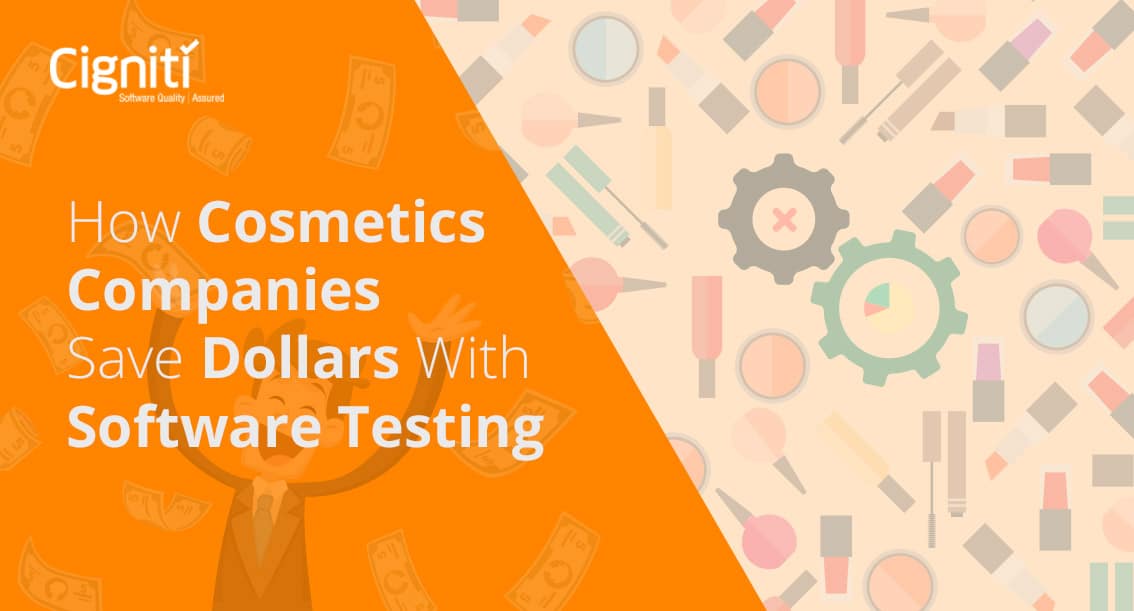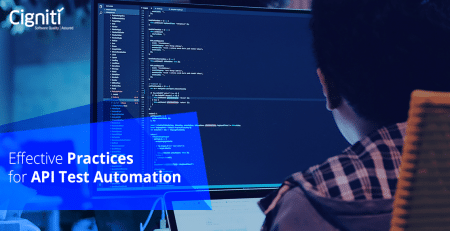Migrating from Selenium to Katalon: A Practical Guide for Successful Transition
In today’s dynamic business environment, enterprises realize the importance of a quality-first approach to test automation. Prioritizing quality at speed over a faster release pipeline is essential for ensuring the success of an organization. However, implementing a successful quality-first approach requires an end-to-end collaboration, where quality becomes the responsibility of all the different personas involved in the software development life cycle (SDLC).
Traditional tools often limit the scope of the QA process and fail to facilitate cross-functional collaboration, making it imperative for organizations to adopt a tool that streamlines the testing process and encourages collaboration among all stakeholders. Selenium is still widely used for automating web browsers, but there is increasing competition from other automation tools. Some experts argue that Selenium is becoming less relevant as newer tools offer better performance and user experience.
At Cigniti, we have extensively and closely worked with both Selenium and Katalon, gaining valuable insights and knowledge along the way. Through years of collaboration, we have developed and learned the best practices to overcome common test automation limitations and challenges. This blog draws from our rich experience and provides a comprehensive overview of the migration process from Selenium to Katalon.
The Dawn of a New Era: Beyond Selenium
With automation testing becoming indispensable, many are questioning whether Selenium is still the best option. While Selenium has long been a popular choice for automation testing, there are several reasons why it may be losing its charm. From limitations in capabilities to a lack of support for newer technologies, Selenium is facing stiff competition from the latest tools and frameworks.
- Selenium’s lack of built-in capabilities for test management and execution makes it difficult for teams to scale their testing efforts
- The tool’s reliance on manual coding and maintenance can be time-consuming and error-prone, leading to increased costs and delays.
- The rise of cloud-based test automation platforms has made it easier for teams to access and use more advanced testing capabilities.
- Selenium’s lack of built-in capabilities for mobile testing and device farm integration limits its usefulness in today’s mobile-first world.
- The tool’s limited support for non-web-based technologies, such as desktop and API testing, means that teams often need to use multiple tools to cover all their testing needs.
- Selenium lacks AI capabilities, hindering its ability to adapt to changing scenarios and perform complex tasks.
Katalon – Eliminating the Selenium Limitations
Katalon is an automation testing platform that provides a comprehensive solution for web, mobile, desktop, and API testing. It is built on top of Selenium and offers advanced features such as built-in test management and execution, support for mobile and web testing, and integration with CI/CD tools like Jenkins and Selenium Grid [need additional KRE license whereas in case of Selenium its free]. Its user-friendly interface, excellent documentation, and large community make it easy for teams to adopt and scale their testing efforts. It complements Selenium by extending its capabilities, becoming a viable alternative for teams facing limitations with Selenium.
Taking the Plunge: Selenium to Katalon Migration
By following a well-planned process, teams can ensure a smooth transition with minimal disruption to their testing efforts. Here is a step-by-step process of migrating from Selenium to Katalon, including best practices for each phase.
- Assess your current Selenium test automation framework: Understand the current structure, test cases, and test data. Identify the areas that need improvement and the features you would like to add.
- Research the best migration approach: There are several ways to migrate from Selenium to Katalon, such as using a script converter, manual conversion, or the Katalon Selenium Converter. Decide which approach would be best for your specific needs.
- Convert Selenium scripts to Katalon: Depending on the migration approach chosen, convert Selenium scripts to Katalon. This step requires technical knowledge and requires a developer or test automation specialist.
- Update test data: Verify that the test data used in Selenium scripts is compatible with Katalon and update it as needed.
- Update test execution settings: Configure the test execution settings, such as the browser, platform, and environment, in Katalon.
- Test execution: Execute the converted Katalon scripts and compare the results with the original Selenium scripts.
- Debugging and troubleshooting: If any issues arise during the testing phase, debug and troubleshoot the scripts.
- Implement and maintain: Once the migration is complete, implement the new test automation framework in the development process and maintain it regularly.
The following best practices can help teams plan and execute a successful migration:
Pre-Migration:
- Assess your current Selenium test automation infrastructure, including test scripts, test frameworks, and test environments.
- Identify the areas where Selenium is falling short and where Katalon can help improve.
- Evaluate the impact of the migration on your current test automation process and test data.
- Develop a migration plan that includes timelines, resources, and any necessary changes to your current test automation process.
- Communicate the migration plan and its benefits to all stakeholders and obtain their buy-in.
During Migration:
- Start with a small pilot project to test the migration process and validate the benefits of using Katalon.
- Use the existing Selenium test scripts as a reference and update them with Katalon’s syntax and capabilities.
- Test the updated scripts in parallel with the existing Selenium test scripts to ensure accuracy and consistency.
- Continuously document and track any issues or challenges encountered during the migration process.
- Continuously evaluate the migration process and adjust as necessary.
Post-Migration:
- Review and update your test automation process and test data to fully leverage Katalon’s capabilities.
- Continuously monitor and maintain the test scripts and test environments.
- Continuously evaluate and measure the benefits of using Katalon over Selenium.
- Continuously train and educate the team on the use of Katalon.
- Continuously seek feedback from the team and make improvements as necessary.
Case Study: Migration from Selenium to Katalon
A leading software development company was using Selenium for its automation testing needs. They were facing challenges with scaling their testing efforts and maintaining their test suite. They decided to explore alternative solutions and ultimately chose to migrate to Katalon. The migration process involved refactoring their existing Selenium test scripts to work with the Katalon framework.
The project yielded significant cost savings for the company. In the first year, the company incurred expenses of $175,765 for the refactoring and development of new tests with Katalon. In the following two years, maintenance costs were $86,215 per year. In total, the three-year cost of ownership (TCO) for the Katalon solution was $348,195. This resulted in a 32.53% savings compared to the TCO of continuing to use Selenium.
| Scenario 1: using Selenium | |||
|---|---|---|---|
| Year | Cost Components | Description | Amount |
| Year 1 | New tests + Maintenance | Test script design + Framework design + Training & enablement | $182,700 |
| Year 2 | Maintenance | Ongoing test script maintenance | $166,700 |
| Year 3 | Maintenance | Ongoing test script maintenance | $166,700 |
| Total TCO | $516,100 | ||
- Automation framework design includes planning and analysis, environment management, script execution,
- Ongoing test script maintenance includes additional test script design, maintenance of existing scripts, test data maintenance, script execution, multi-device configuration across web, mobile, desktop, and APIs through scripting etc.
| Scenario 2: move away from Selenium, refactor and test with Katalon | |||
|---|---|---|---|
| Year | Cost Components | Description | Amount |
| Year 1 | New tests/refactoring from Selenium | Licensing costs + Test script design + Test configuration | $175,765 |
| Year 2 | Maintenance | Licensing costs + Ongoing test script maintenance | $86,215 |
| Year 3 | Maintenance | Licensing costs + Ongoing test script maintenance | $86,215 |
| Total TCO | $348,195 | ||
- Users can leverage readily available framework with Katalon and don’t need to design it from scratch. Katalon offers standard features for environment and device configuration that does not require scripting, and automation test script design using Groovy scripting.
- Ongoing test script maintenance includes additional test script design, maintenance of existing scripts leveraging Katalon’s advanced features (auto-healing, Smart waits for better synchronization, default multi-format reporting in HTML, PDF, & XLS), test data maintenance, script execution, etc.
- We have factored cost for 12 Katalon licenses
To Sum Up
Migrating from Selenium to Katalon can provide significant cost savings for businesses while also offering advanced features and capabilities for test automation. The ROI analysis showed a 32.53% total cost savings over three years by moving away from Selenium and refactoring tests with Katalon.
As a strategic partner to Katalon, Cigniti can provide a comprehensive solution for businesses looking to make the switch. Our team of experts can assist with migration services and provide ongoing support to ensure a smooth transition.
Cigniti is the world’s leading AI and IP-led Digital Assurance and Engineering services company that helps global companies across industries continuously accelerate their Digital Transformation and become Digital-First. Reach out to Cigniti and Katalon teams to learn more about how we can help you transition to Katalon and achieve your test automation goals.
Disclaimer: As the world’s leading AI & IP-led Digital Assurance & Digital Engineering services company, Cigniti is tool/platform agnostic and works in alignment with our customer requirements by creating value with the best suitable option. This blog has been written from a practitioner’s point of view on certain use cases observed and does not intend to promote or prove the advantages of any specific tool.









Leave a Reply